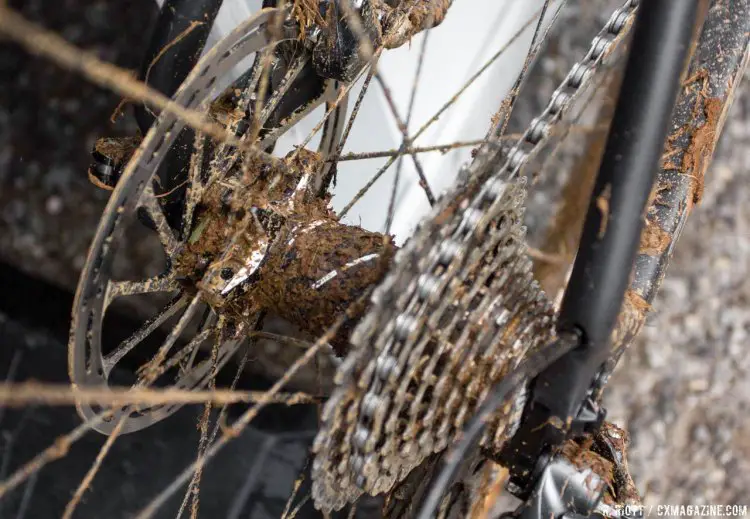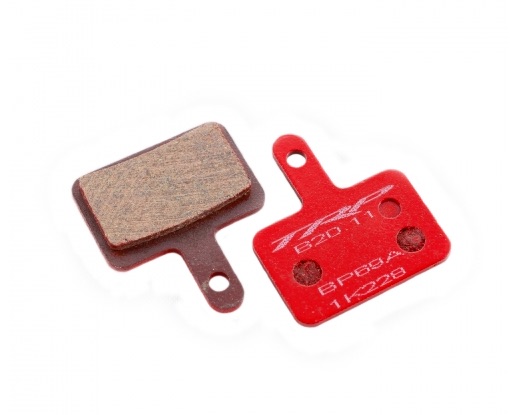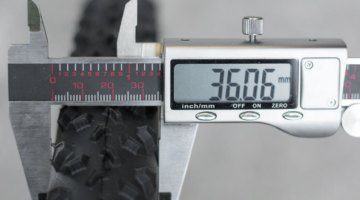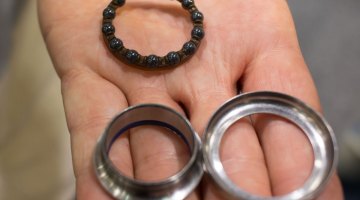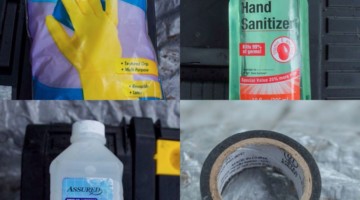Traditionalists take note. Disc brakes are here to stay, at least for cyclocross. From pro-level models to the latest offerings for juniors, more and more bikes are coming equipped with discs. And with the growing number of riders on disc brakes there are more questions regarding care for disc brake components.
One of the most common things riders face is wear and replacement of disc brake pads. We’ve heard stories of riders going through a set of pads in a single race. Sure, riding conditions and style play a role, but is there more to it than that? Are there best practices when it comes to disc brake pads?
We spoke with representatives from TRP and SRAM and asked them a few questions about disc brake pads to get the official word on what’s the right things to do and when. [We reached out to Shimano as well, but as of this writing have not heard back from company representatives. – Ed Note.]
As mentioned above, since disc brakes have become more and more commonplace on cyclocross and gravel bikes, we’ve heard increasing anecdotal reports of riders wearing out pads in a single race or single ride. For riders facing particularly nasty conditions or long gravel races, is there a pad compound that’s preferable?
Bryce Olsen at TRP said that his company has found that while all of their brakes come with pads that are a semi-metallic compound great for general conditions “metallic compound pads have the longest wear life in adverse conditions,” a sentiment echoed by Nate Newton at SRAM.
Newton went on to explain that, “SRAM hydraulic road disc brakes come stock with steel-backed organic brake pads. These are the best option for most road riding conditions and offer the best balance of power and control,” before adding that the company produces “steel-backed sintered metallic brake pads for extremely muddy conditions.”
For those unfamiliar, sintered refers to the process of taking a powdered compound and forming into a solid through the application of pressure and heat, without destroying ot melting the given compound. Newton also told us that
“sintered metallic pads are longer wearing and are ideal for use when abrasive mud causes excessive pad wear. Keep in mind that while sintered pads offer better wear resistance, they do a poor job of dissipating heat. So for general road riding, organic brake pads are required to avoid brake fade. A long dry gravel race would still call for organic pads, which would not be in danger of wearing out. Metal sintered pads are only needed when water is added to abrasive materials like sand to create wet, gritty mud.”
Given that pads can wear more quickly in adverse conditions, some of us here at Cyclocross Magazine as well as some readers have taken to carrying extra pads in a saddlebag or Camelbak. Some riders go so far as to install new pads before an event that they suspect is going to wear through the pads they currently have installed.
SRAM’s Newton was not convinced of the need to take such precautions saying that “[p]ad wear should be minimal during a long gravel event, so as long as there is still life in the pads, they are properly bedded in, and there will not be extreme mud during the event, it shouldn’t be necessary to run new pads or carry spares.”
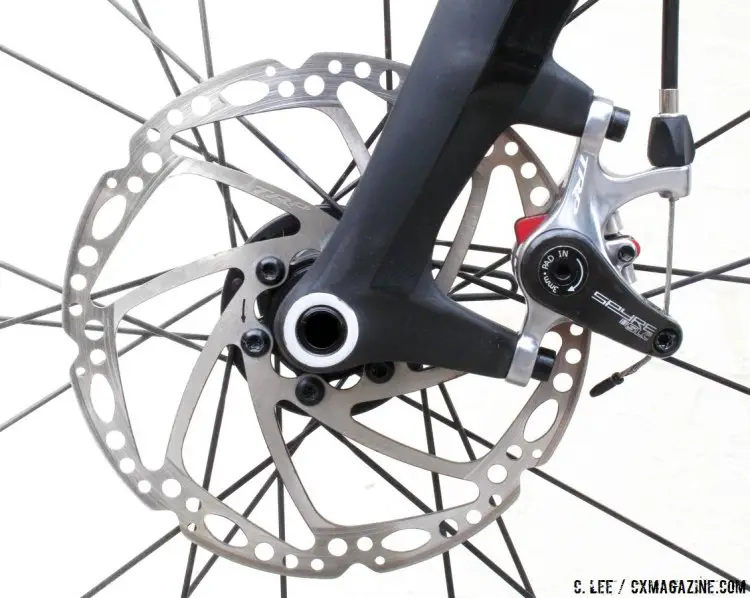
Mechanical or hydraulic, disc brake pads need to be bed in properly for best operation. © C.Lee / Cyclocross Magazine
However, TRP’s Olsen, was more pragmatic when we spoke of our preparedness. “I suppose carrying a spare set or two couldn’t hurt and won’t take up much space or weight in a saddle bag,” said Olsen before adding that
“[w]hether or not a rider should install new pads before an event is hard to judge definitively. There are many factors that come into play including weather and trail conditions, amount of descent, rider weight and riding style. Obviously the best situation would be to install new pads before every race, but each individual rider needs to assess the current condition of their brake pads and the course they will be riding.”
Determining when to replace pads may seem easy to some, but to those new to the technology, there may be some question. TRP’s recommendation is to replace pads when there is 0.8mm of pad material remaining. SRAM reaches a similar conclusion but measures differently saying that pads should be replaced when the thickness of the backing plate and pad material together gets down to 2.5mm. Newton also noted that SRAM rotors should be replaced when they reach 1.55 mm thickness.
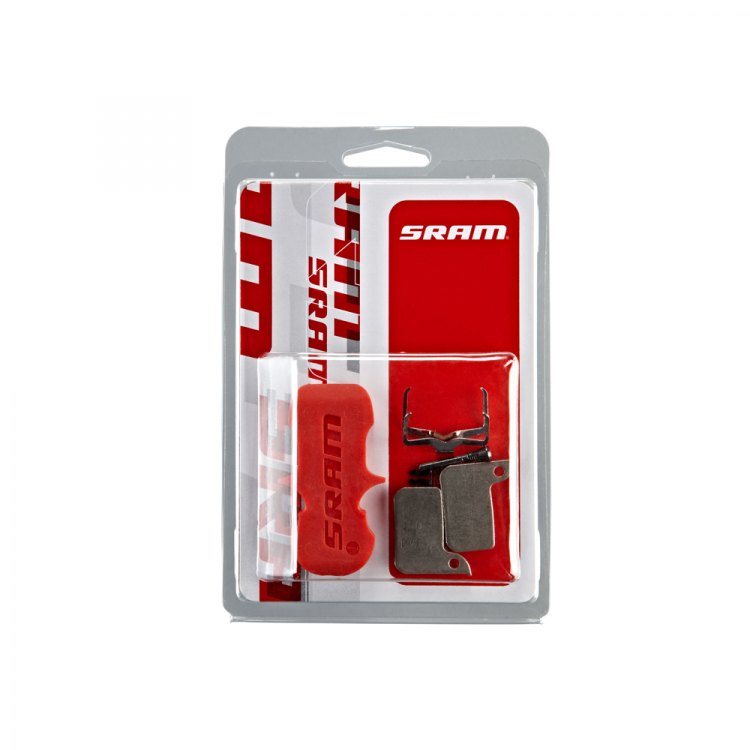
Keep an eye on pad wear and replace when needed to ensure proper brake function. Photo courtesy SRAM.
Riders wanting to get the most out of their brake pads need to take care when installing them as well as when riding. Obviously, using the right pad in the right conditions is the best way to ensure the most use noted Olsen. That combined with “proper braking technique and not dragging the brake if you don’t need to can make them last longer,” he said.
Newton also pointed out that “[p]roper bed in of the pads and rotors is also a part of getting the maximum life out of your pads,” adding that riders should also “only use one pad material type on a given rotor, and occasionally check that your calipers are aligned and your pistons are advancing and retracting properly,” all of which can add to pad life.
Given the fact that some pad materials are best suited to certain situations, that is the smartest upgrade riders can make according to Olsen–the right pads for the right conditions; metallic pads for mud, organic pads for dry, normal conditions and semi-metallic pads for all-around riding, although they may wear quicker when the going gets rough. Newton says that SRAM recommends “organic pads for almost all conditions, but offer metal sintered pads for extreme mud.”
Caring for your equipment maintains proper component function and not only improves the longevity of your bike, but it helps ensure that you have a great ride every time. Stay tuned for more Mechanical Monday pieces as we look to help you keep your bike rolling. Next up we’ll be looking at general disc brake maintenance.













